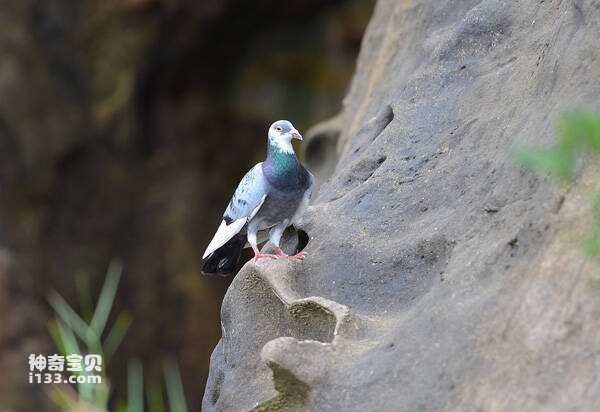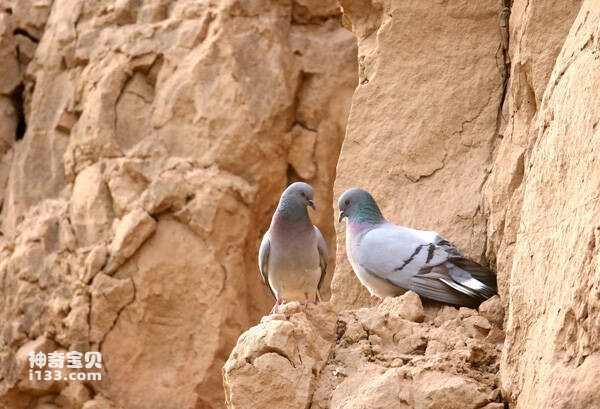Columba rupestris
IUCN
LCBasic Information
Scientific classification
- name:Columba rupestris
- Scientific Name:Columba rupestris,Hill Pigeon
- Outline:Landfowl
- Family:P.Order P.family P.genus
Vital signs
- length:23.2-35CM
- Weight:180-305g
- lifetime:15 years or so
Feature
The rock pigeon has white subterminal spots on its tail feathers
Distribution and Habitat
It is distributed in Afghanistan, Bhutan, China, India, Kazakhstan, the Democratic People's Republic of Korea, the Republic of Korea, Kyrgyzstan, Mongolia, Nepal, Pakistan, Tajikistan and Turkmenistan.
It mainly lives in mountain rocks and hanging rock cliffs, and can reach the highest altitude of 5000 meters above the mountain and plateau areas.
Appearance
The head, neck and upper breast of the rock pigeon male are SLATE blue gray, and the neck and upper breast are decorated with metallic copper green, and are extremely glossy, and the beak and upper breast are also purplish red luster, forming a neck ring. The upper back and shoulders are mostly gray, the upper wing coverings are light SLATE gray, the inner fly feathers and the large cover feathers have two incomplete black transverse bands, the primary fly feathers are dark brown, the inner middle is light gray, the outer and the tip of the feathers are brown, the secondary fly feathers are also brown, the lower back is white, and the upper waist and tail coverings are dark gray. The tailstone is grayish black, black at the tip, and crosses a broad white horizontal band near the tail. Chin, throat dark SLATE gray, from the chest below gray, to the abdomen becomes white, the axillary feathers are also white.
The female bird is similar to the male bird, but the feather color is slight
Details
The rock Pigeon (Columba rupestris) is known as Hill Pigeon and has two subspecies.

Rock pigeons often travel in groups. They feed in small groups in the valleys and plains. Sometimes they form large groups of nearly 100 animals. Sex is more docile. The call is "goo goo", similar to that of a pigeon. Nodding while tweeting. Mainly to plant seeds, fruits, bulbs, roots and other plant food for food, but also eat wheat, green naked, grain, corn, rice, beans and other crop seeds.

The breeding period of rock pigeons is from April to July. Nest in mountain rock crevices and cliff caves. In plain areas, nests are also built on top of ancient towers and tall buildings. In Tibetan areas, nests are also sometimes built in the holes in the walls and under the eaves of abandoned houses. The nest is made of thin branches, dead grass and feathers. In a disc shape. Each litter usually lays 2 eggs, and may breed 2 broods a year. The eggs are white in color, 35-38×26-28 mm in size, and weigh 12-13 grams. Male and female birds incubate their eggs in turn. Incubation period is 18 days. Young birds are late sex.
Listed on the International Union for Conservation of Nature (IUCN) 2012 Red List of Threatened Species ver 3.1 - Not Threatened (LC).
Protect wild animals and eliminate wild meat.
Maintaining ecological balance is everyone's responsibility!








